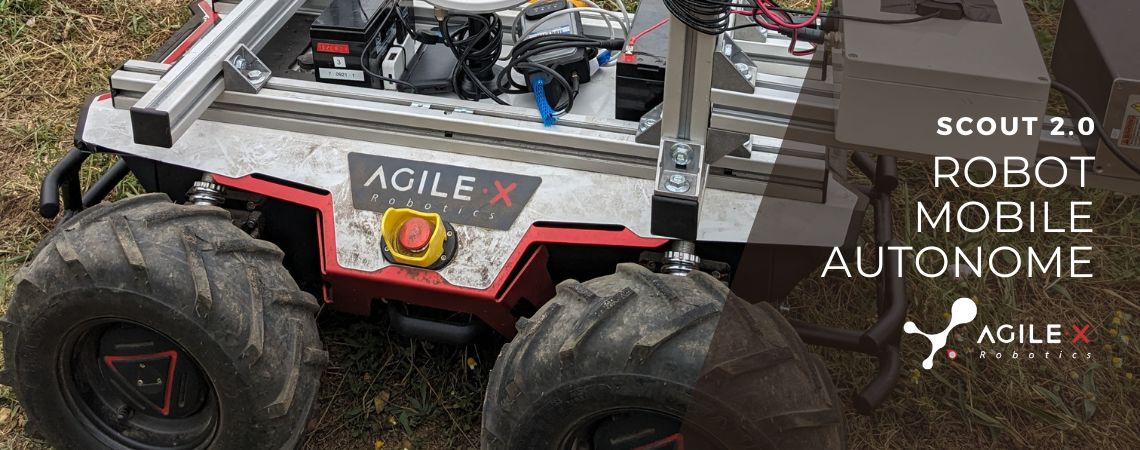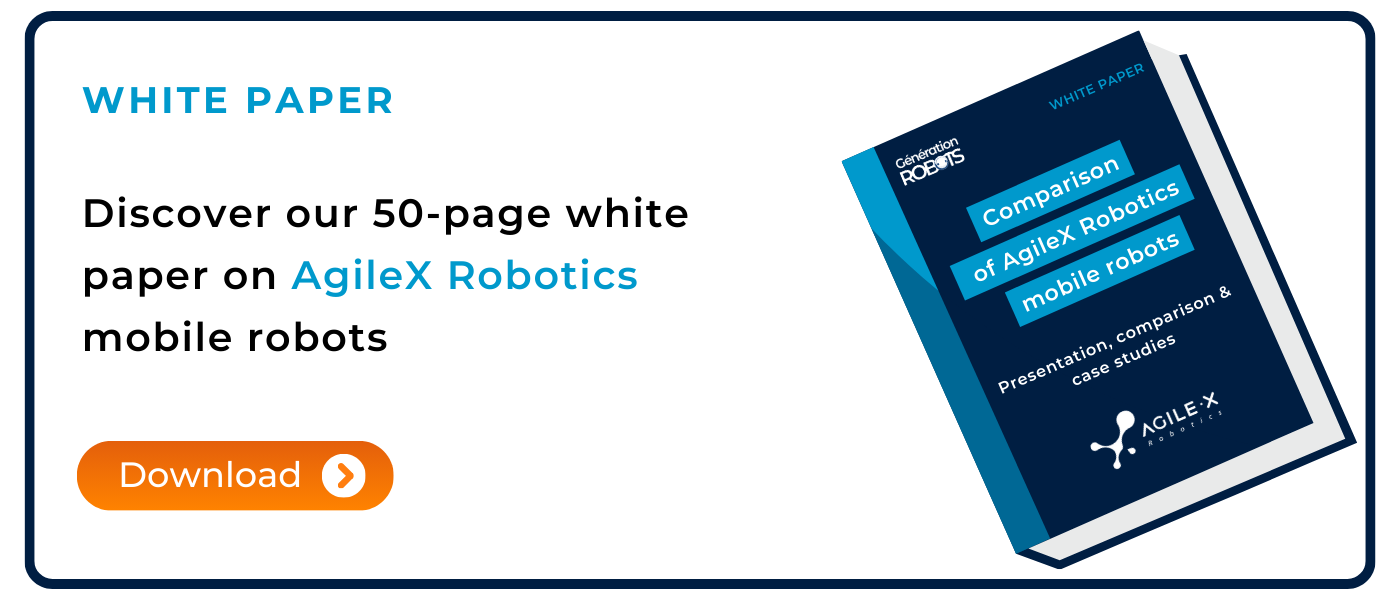The market for mobile robotics is experiencing growth, and this type of robots is being deployed in various sectors such as surveillance, exploration, smart cities, and agriculture.
Génération Robots customized a mobile robot for a Higher National School and a laboratory based in Bordeaux to address a data collection challenge in vineyards. It’s an experimental research project.
Our team visited the vineyard domain of Château Luchey-Halde, accompanied by 4 research professors from IMS Bordeaux, to witness the robot in action. The objective of these researchers is to build an extensive database containing photos of vine leaves and grape clusters at every stage of their development, throughout all seasons, with or without diseases, etc. This database can be utilized, for instance, to develop applications or third-party interfaces that can assist farmers in detecting diseases early, monitoring phenology (the study of plant development phases), or predicting future yields (liters per hectare).
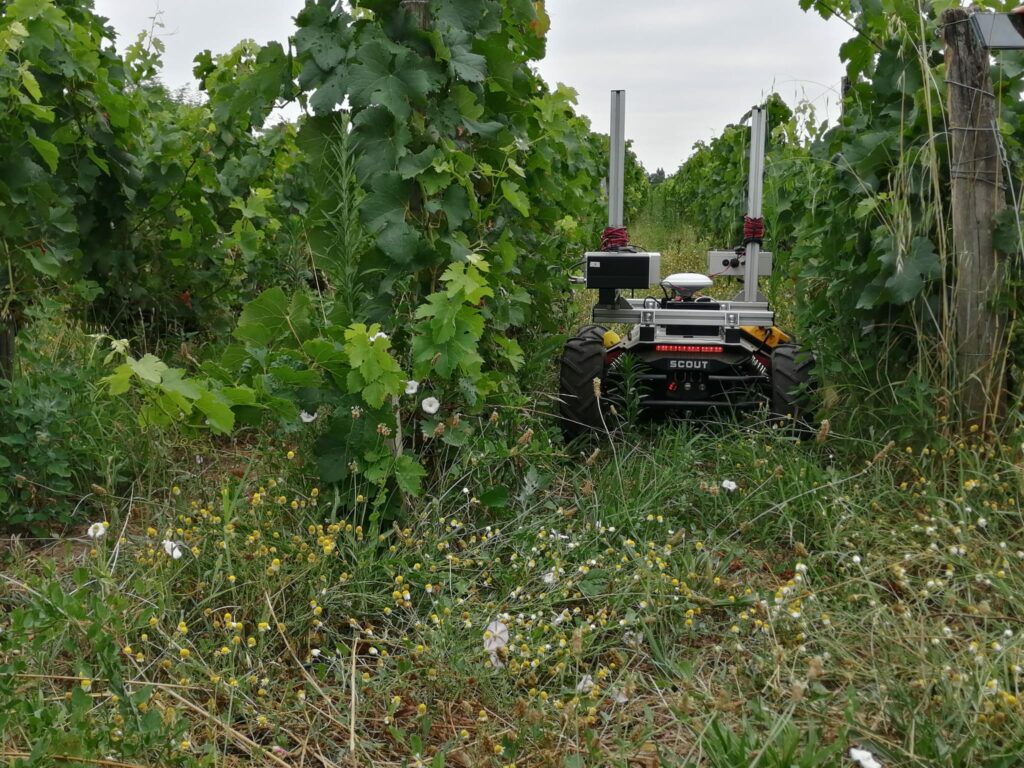
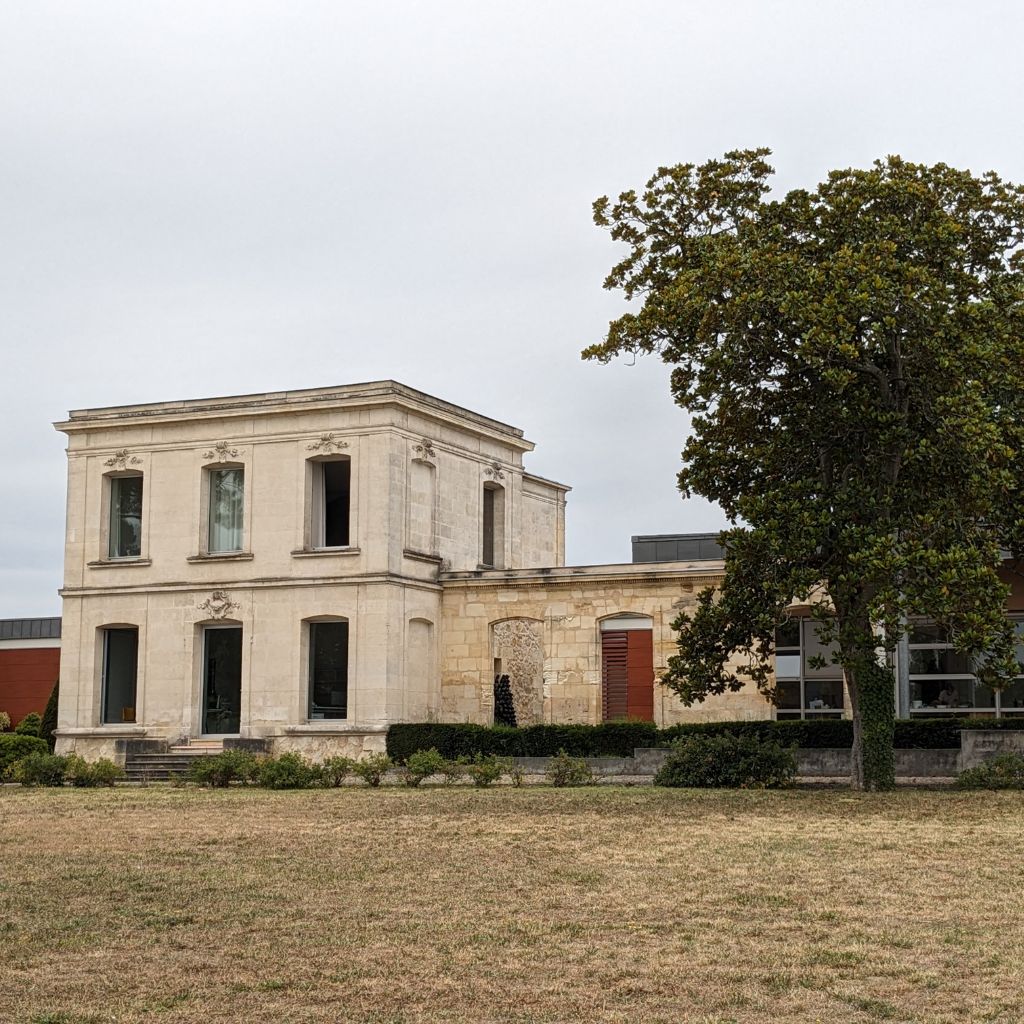
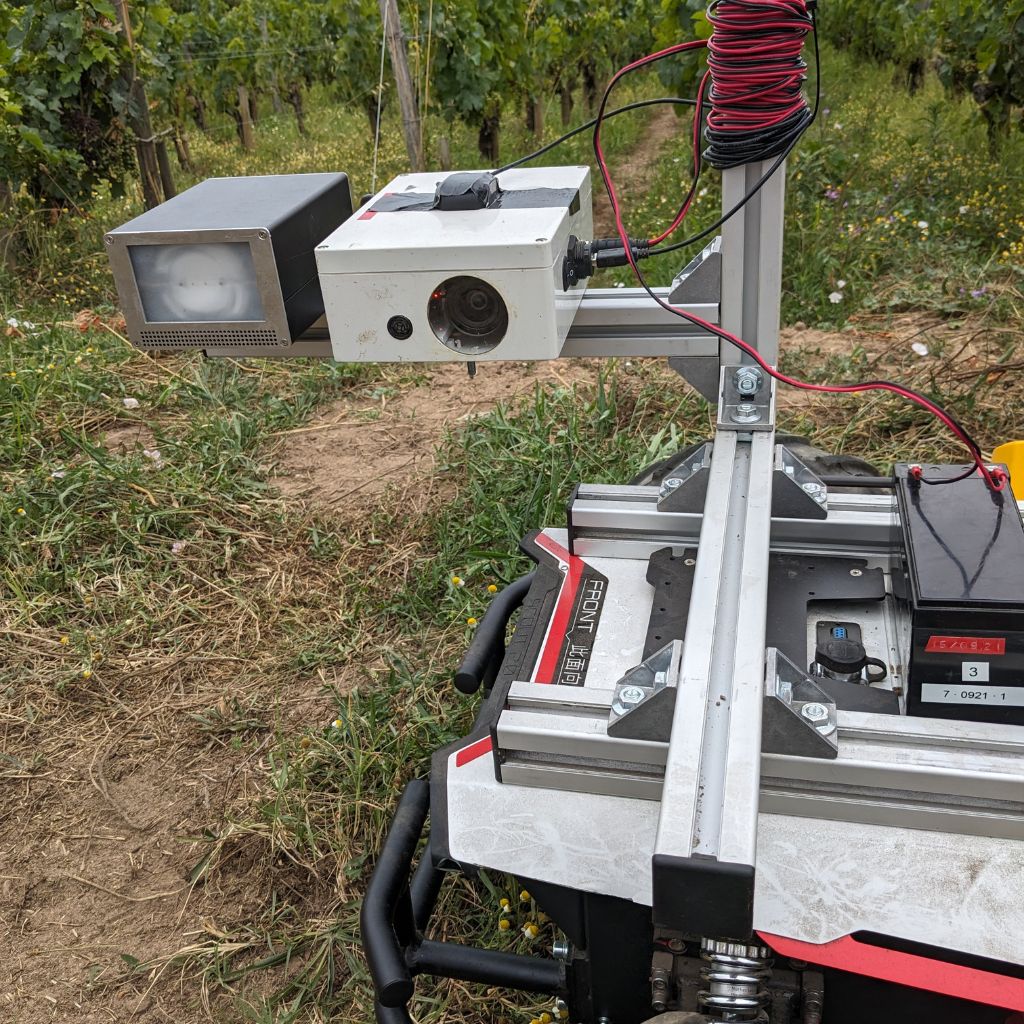
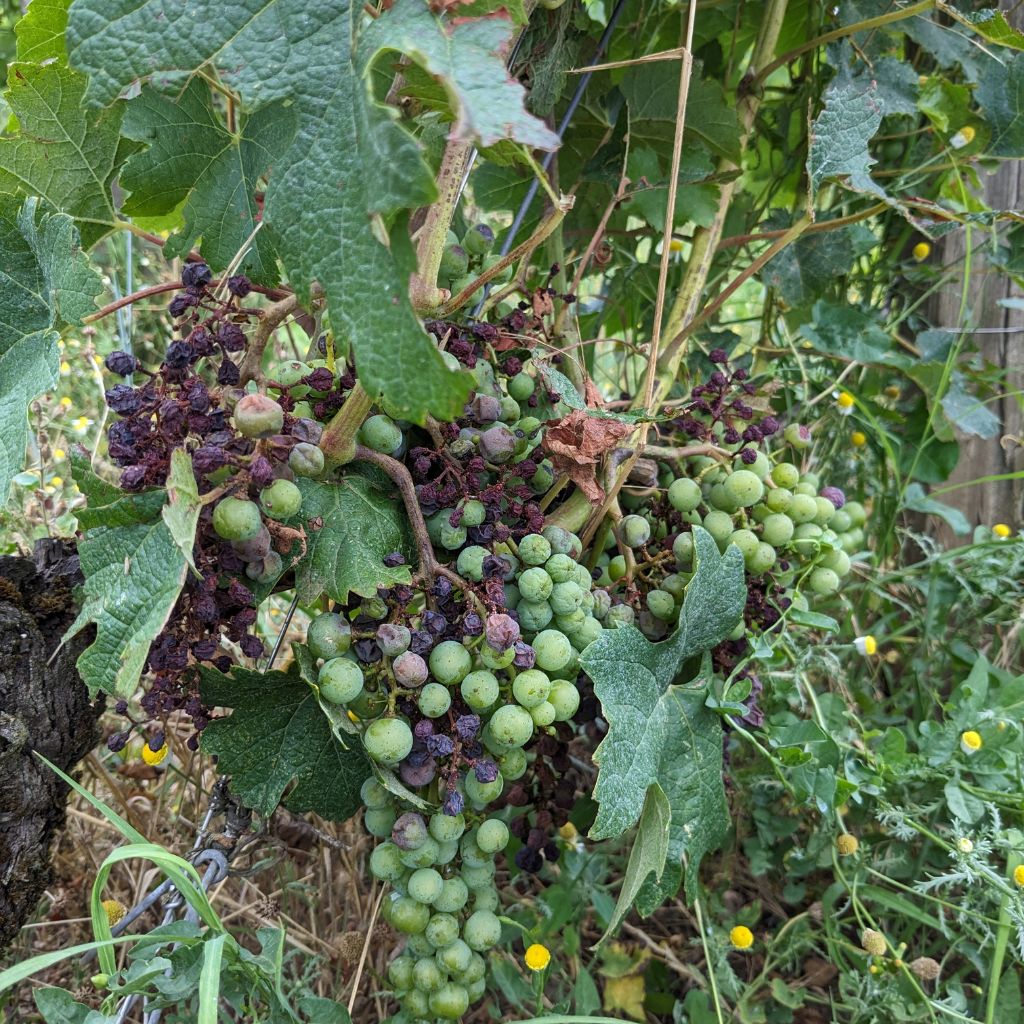
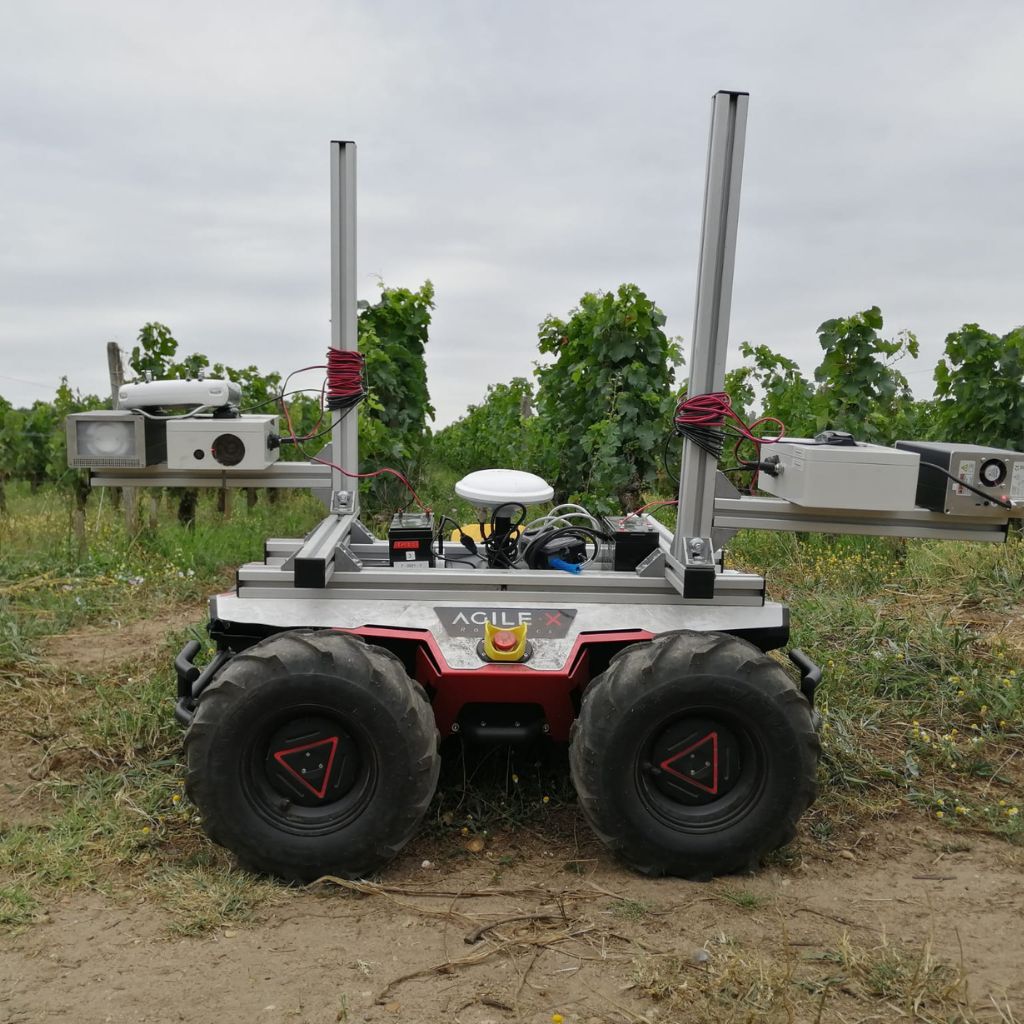
To carry out this photo collection, initial tests involved using a camera mounted on a tripod, which a team member moved every meter to capture photos of leaves on nearly all the vine plants. This technique immobilizes a person in a long and tedious task (and arduous depending on weather conditions). To save time and avoid carrying photo equipment, the team used a wheelbarrow on which all the gear was mounted (including a powerful industrial flash for taking photos in standard lighting conditions, regardless of outdoor brightness). In the end, the constraints were quite similar to the tripod method. So, the researchers opted for a mechanical solution, meaning mounting photographic equipment on both sides of tractors that regularly pass through the vineyards. This solution proved unsatisfactory due to the dust kicked up by the tractor and the sensors that can be affected by vibrations or foliage.
The research team then came up with the idea to automate this task autonomously, where human intervention adds no value. SCOUT, developed by AgileX Robotics and distributed by Generation Robots, is a range of small all-terrain mobile robots, especially suited for the agricultural sector.
The SCOUT 2.0 was utilized by the research team to address the encountered challenges. Initially customized by Generation Robots (including the addition of a GPS module), the team then installed the imaging equipment on the SCOUT 2.0. With this embedded imaging system (ARGB cameras and industrial flashes), the customized robot optimally captures photos of vegetation and fruits. Currently, it manages to make tens of thousands of image acquisitions per week, resulting in a significant amount of collected data. The project is named SCOUT & CIE, funded by the University of Bordeaux through the ROP6 project and partially by the Nouvelle Aquitaine region.
SCOUT 2.0 robot presentation
Designed for research, education, and development in industrial robotics, the SCOUT 2.0 mobile base falls into the category of UGVs, or Unmanned Ground Vehicles. In addition to being CE certified, this autonomous mobile base offers a diverse range of mechanical features and interesting movement performances:
- A robust chassis capable of supporting up to 50 kg.
- Agile steering with 4-wheel drive and independent suspension.
- A zero turning radius for pivoting in the tightest spaces.
- Adaptability for all-terrain use indoors and outdoors.
-
Two communication interfaces (CAN and RS232) for transmitting data related to movement, direction, etc., as well as for secondary development.
A solution that optimizes research team time
Currently, the SCOUT 2.0 is teleoperated by a researcher, navigating through the rows using a detection algorithm and image processing. In the medium term, the robot will perform these tasks autonomously, freeing up time for the research team to focus more on image processing challenges, learning, or algorithm enhancements.
Examples of applications that can be developed with this system:
For instance, this system could quickly count grapes in a vineyard plot. It could also detect the progress in ripening in different areas of the plot. This could help predict the yield of the plot several months in advance. A solution like this could be used to detect diseases (esca, mildew) through the analysis of numerous images by an AI. It’s a challenging task as the robot moves at 3 or 6 km/h and may not necessarily detect all diseases.
What are our future objectives?
-
Integrating a GPS with a camera would allow locating the rows where the images were captured. Currently, the robot is teleoperated remotely by engineers, but it will be automated in the future.
-
The robot cannot work in the rain as the images become blurry, and the flash only captures raindrops.
-
These researchers are convinced that bringing sensors to the plots would enable farmers to better manage their crops and have a deeper understanding of disease prevalence.
-
This robot could be very useful for wine growers: for example, it would help determine the optimal number of harvesters needed during harvests, especially by grape variety. Extremely useful for the logistics of harvesting, the logistics of cube placement, grape distribution, as well as sales forecasts.
-
Mounting the camera on a robotic arm adapted to the mobile base would enable capturing photos of clusters hidden behind the vine foliage. This represents a mid-term evolution of the robotic solution.

